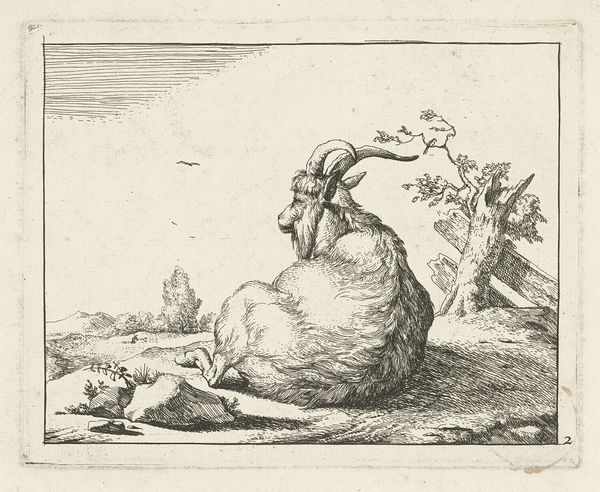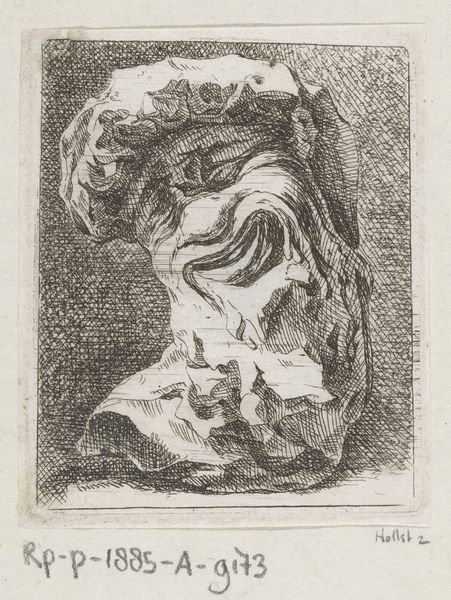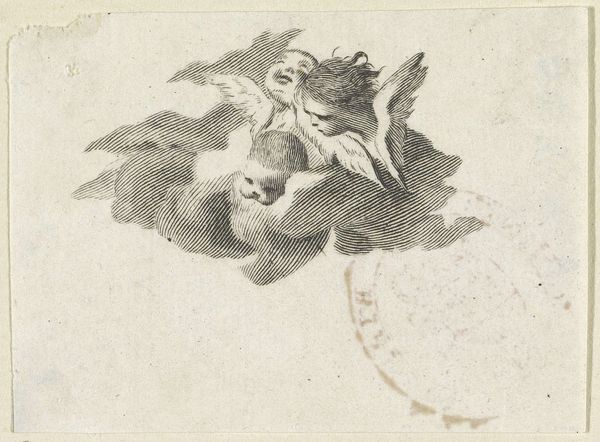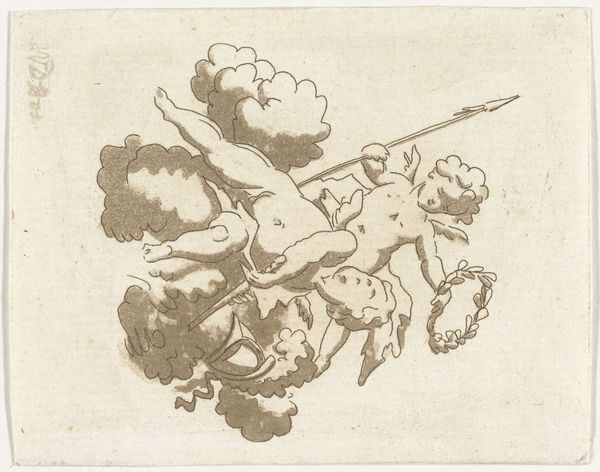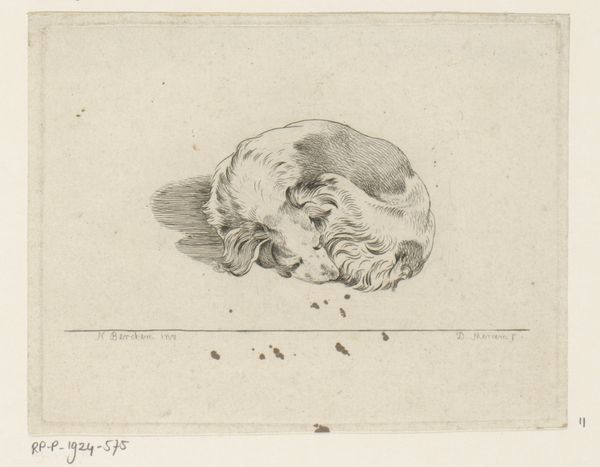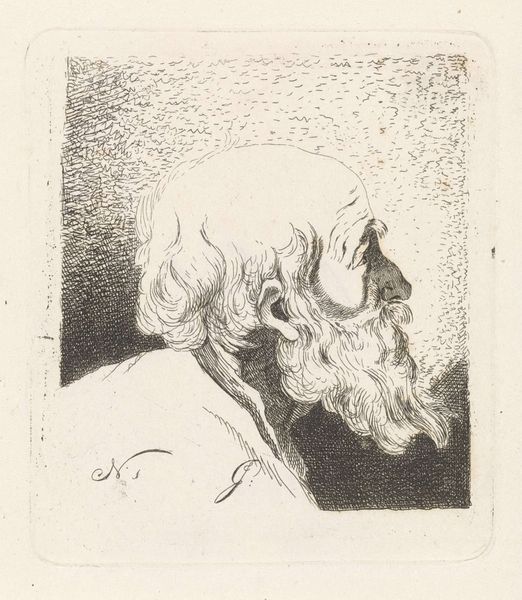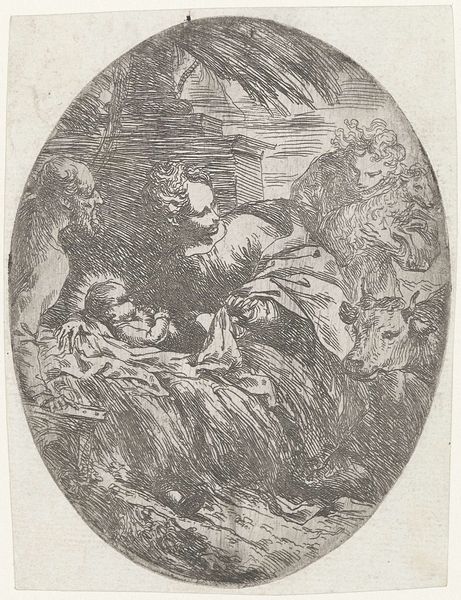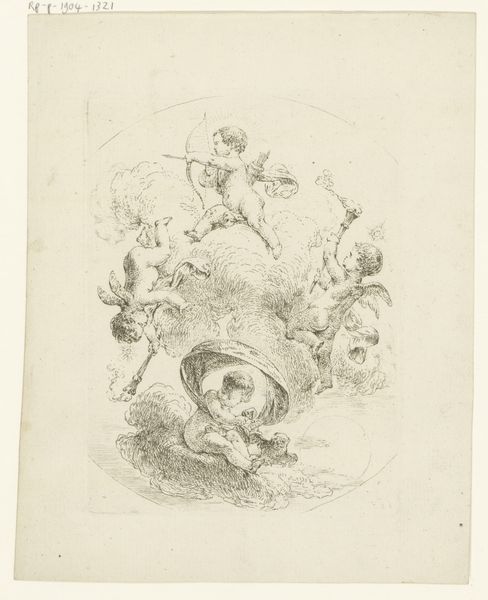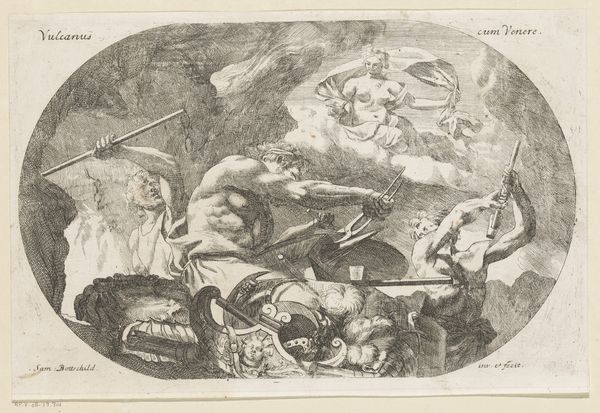
drawing, dry-media, pencil
#
pencil drawn
#
drawing
#
dutch-golden-age
#
pencil sketch
#
dry-media
#
vanitas
#
pencil drawing
#
pencil
Dimensions: height 95 mm, width 113 mm
Copyright: Rijks Museum: Open Domain
Curator: This is Cornelis Visscher’s “Study of a Skull, Facing Right,” a drawing likely made between 1654 and 1658, currently held here at the Rijksmuseum. Editor: Immediately, I’m struck by its density. Look at the way Visscher uses the pencil; it's not delicate at all. There’s a real commitment to rendering texture and shadow. Curator: Absolutely. The choice of dry media – specifically, the pencil – signals a very particular artistic engagement. It suggests a focus less on illusionism and more on the materiality of mark-making itself. Consider the broader context: the Dutch Golden Age and its burgeoning merchant class...art became a commodity, accessible in new ways. Pencil drawings, quicker and cheaper than oils, participated in this shift. Editor: That economic accessibility definitely influenced how the image would have been received, making the ‘vanitas’ theme, so prevalent then, more universally impactful. How the subject of death and decay was being processed and commodified at that time by different sections of society is telling. Curator: Precisely! This wasn't just some morbid fascination. The “vanitas” theme touches on deep anxieties around earthly possessions and the fleeting nature of life – pertinent in an era defined by trade and accumulation. The drawing also raises questions about the labor involved; how long did Visscher spend meticulously hatching those shadows? And from where did this skull originate? A dissection room? A graveyard? These details all affect our reading of the image. Editor: Those questions are what make this such a powerful artifact of its time. Beyond the art historical context, the image also resonates with questions that preoccupied Dutch society: social hierarchy and its impermanence. This sketch would not have appeared in isolation, which encourages thinking about the type of audience that would engage with these images and the role they might have played within moral debates. Curator: Ultimately, Visscher’s work invites us to contemplate our mortality, but also to appreciate the ingenuity and labor involved in the seemingly simple act of drawing. It reveals a network of cultural, social, and material relations condensed into a single image. Editor: Indeed, it's not just about death; it's about how we, as societies and individuals, contend with death, mortality, and even value. An intense and strangely moving glimpse into a past that, in many ways, mirrors our present concerns.
Comments
No comments
Be the first to comment and join the conversation on the ultimate creative platform.
